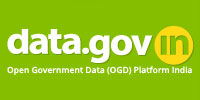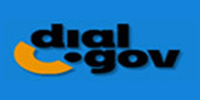Guidelines:
Swavalamban is a Self-employment Generation Programme (SEGP) initiated by the State Government with the objective to ensure that a sizeable number of unemployed youth and SHGs are developed as potential individual or group entrepreneurs so that they can take up gainful self-employment. The Programme was initially launched in July 2001, but has since been expanded in its scope in 2005-06. A Swavalamban Society has been constituted for effective implementation of the Programme. The SHGs component of the Programme is being implemented through RD Department and the Self-employment Programme (SEP) component is being implemented by Industries & Commerce Department through the DICs. The main components of the Programme are Skill Up gradation and Financial Support (where necessary).
- The existing Guideline of Swavalamban Scheme has been revised. As per the revised guideline, application will be received through Online process. The Revised guideline is applicable from the financial year 2019-20.
- The guideline of Swabalamban scheme has been revised w.e.f 2019-20 to make it more entrepreneurs friendly. Also, maximum limit of loan amount has been fixed upto Rs. 1.00 cr. for each project, in which no upper ceiling was fixed earlier.
- The subsidy admissible is 30% of the Project Cost (for women 35%), Subject to ceiling of Rs.1,00,000 per case for all cases.
- Any individual within the age group of 18 to 50 years can apply for loan. Only one person from one family is eligible for financial assistance. There is no income bar and qualification bar for availing of financial assistance under this programme. Projects promoted under partnership category, SHG and Cooperative are also eligible for assistance under the programme.
- Administrative/ Monitoring Mechanism: The administrative set up for monitoring and supervision of the programme at the state level consists of State Level Steering Committee under Chairmanship of the Chief Minister and State Level Executive Committee (under Chairmanship of the Chief Secretary). Similarly, at District Level, there is a District Level Monitoring Committee headed by the Sabhadhipati, Zila Parishad and District Level Implementation Committee headed by DM & Collectors and at Sub-Division Level Monitoring Committee headed by Sub-Divisional Magistrate.
- Major activities covered: The major activities covered under the programme are pig farm (including breeding), dairy, poultry, fishery, metal bases industries including fabrication job, tailoring and readymade garments manufacturing, jute items manufacturing, cane & bamboo items manufacturing, rice milling, fruit processing, candle manufacturing, jewellery unit, DTP/computer service, photocopying, photography, decorator service, transport vehicles, repairing & servicing of electronic goods, cycle rickshaw repairing, vehicle/two wheeler etc. repairing, TV/cable networking, power tiller, saloon, selling of garments & handloom products, grocery & stationery, electronic goods, chemical & fertilizer, medicine, foot wares, other small business etc.
- The performance under Swavalamban programme has picked up in recent years. Up to 2019-20 total financial support of about Rs.438.37 Crores has been provided to 21614 entrepreneurs under Swavalamban in the form of Bank loan, on an average of Rs. 2.03 lakhs per enterprise.
- Overall Year-wise Performance (since inception) is as follows: (Rs. in lakhs)
| Year | Target | Sponsored | Sanctioned | Disbursed | |||
|---|---|---|---|---|---|---|---|
| No. | Amount | No. | Amount | No. | Amount | ||
| Upto 2003-04 | -- | 316 | 312.87 | 161 | 128.71 | 67 | 51.85 |
| 2004-05 | -- | 425 | 420.79 | 239 | 191.07 | 184 | 142.40 |
| 2005-06 | 500 | 300 | 533.05 | 194 | 172.40 | 164 | 145.30 |
| 2006-07 | 1000 | 1373 | 1999.51 | 499 | 572.75 | 377 | 353.56 |
| 2007-08 | 600 | 1067 | 1635.62 | 448 | 522.04 | 439 | 426.68 |
| 2008-09 | 1000 | 1034 | 1589.33 | 595 | 853.24 | 466 | 569.68 |
| 2009-10 | 1000 | 1887 | 3259.38 | 1119 | 1708.99 | 904 | 1062.02 |
| 2010-11 | 1500 | 2681 | 5394.53 | 1660 | 2919.62 | 1442 | 2117.07 |
| 2011-12 | 2000 | 3428 | 6670.74 | 2075 | 3757.56 | 1859 | 2910.04 |
| 2012-13 | 2000 | 3916 | 8311.17 | 2022 | 3918.42 | 1798 | 3102.62 |
| 2013-14 | 2500 | 4681 | 10708.15 | 2332 | 4867.09 | 2038 | 3927.58 |
| 2014-15 | 3000 | 5232 | 14156.95 | 2508 | 5685.64 | 2223 | 4490.20 |
| 2015-16 | 3500 | 5729 | 15856.65 | 2963 | 6970.83 | 2594 | 5502.90 |
| 2016-17 | 4000 | 6250 | 18639.34 | 3071 | 7756.67 | 2529 | 5913.32 |
| 2017-18 | 4000 | 6657 | 21371.42 | 2960 | 8279.44 | 2370 | 6542.71 |
| 2018-19 | 4000 | 7311 | 26415.35 | 2535 | 8056.9 | 2100 | 6422.65 |
| 2019-20 | 4000 | 5836 | 23471 | 786 | 2693.04 | 60 | 156.57 |
| Total | 34600 | 58123 | 160745.85 | 26167 | 59054.41 | 21614 | 43837.15 |







